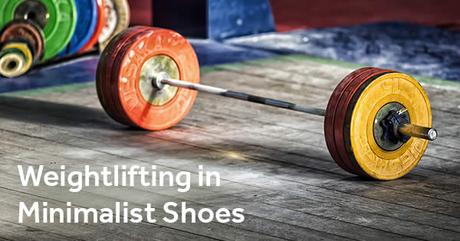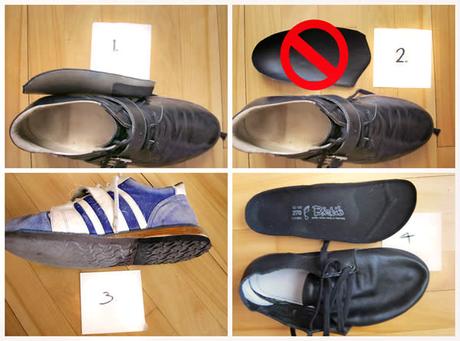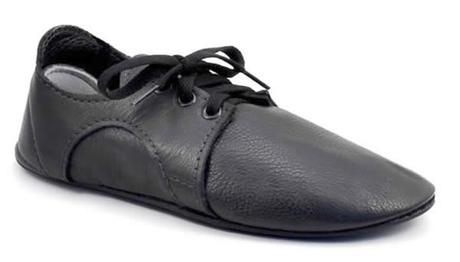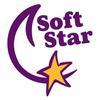
John Margolis first began weightlifting as a teenager and has had his finger on the pulse of the professional weightlifting world for decades. He is a co-founder and head coach at the Concordia-International Weightlifting Club, a training site dedicated to Olympic-style weightlifting based in Montreal, Quebec. He is also active in Master’s level world weightlifting competitions and has held many positions in the sport, including president of the Canadian Master’s Weightlifting branch of the Canadian Weightlifting Federation. Margolis has devoted much of his life to studying and refining professional weightlifting techniques, even going so far as to teach himself Russian so he could research the vast array of Russian sports science articles on the subject.
A few years back, Margolis became dissatisfied with the conventional weightlifting shoes and orthotic inserts he had been using for training and competing, and he started looking around for alternatives. He now refers to his old footwear as the “numbing orthotics” he wore for way too long. After much shoe research and experimentation with many of the top athletic shoe brands out there, Margolis set his sights on minimal footwear. Specifically, he decided to switch to Softstar’s Dash RunAmoc. He started his transition in May 2015, and in time he realized that minimalist styles were the best weightlifting shoes for him, and that this type of footwear stands to offer a range of benefits to other weightlifters.
A Slow and Deliberate Transition to Minimal Shoes
Below is a timeline from 2015 that Margolis shared with us showing how he personally approached this transition. He is quick to point out that a safe and slow transition over several months is important for preventing injury:

- Before May, 2015: "My Olympic lifting shoes and the numbing orthotics I used for way too long."
- May 9: Used the same shoes, but began training without the orthotic inserts and let his body adjust to this for about six weeks.
- June 27: Moved to a pair of his old training shoes, which had the heel lowered by about half the height of his other weightlifting shoes. He says this switch did not require as much getting used to as dropping the orthotics.
- July 4: Started wearing the Dash RunAmoc, but added a thin, full-length Birkenstock insole, as he didn not feel quite ready for the completely minimal shoes. He trained with the insoles for several weeks before removing them. He used thicker socks in the RunAmocs at first, but eventually came to prefer thin socks.
During this process, Margolis reduced his training loads and until he gradually came back to the weight he was lifting prior to the shoe transition. Along the way, he continued using his preferred Wharton Active Isolated Stretching method for increased range of motion, which he strongly recommends.
Margolis says his feet, ankles and knees actually adjusted most easily to the new shoes, but that his shoulders and lower back took a little longer to get used to the new dynamic—which goes to show how much footwear affects the rest of our bodies! He also said certain lifts were influenced differently by the change in shoes. “I found that movements like dead lifts or squats are easier to adapt to than the Olympic-style quick lifts, such as the snatch and clean-and-jerk, which require fast and demanding jumps and foot placement.”
In his experience, taking the time to patiently and smoothly transition was well worth it, and eventually led him to discover a whole host of benefits the new shoes provided.
Benefits of Minimal Weightlifting Shoes
Margolis told us weightlifting simply feels different in minimal shoes. He says he now experiences “foot feedback” when he lifts, which is something he never felt previously in his old shoes. Because of the much closer contact to the lifting platform, there is a positive “feel” of the platform as he pushes against it, then pulls and dives under the bar during a clean-and-jerk. He says it takes time to acclimate to this feeling and without question there is a difference in body mechanics, but for him it has been a positive change.
After several months of using his Dash RunAmocs, Margolis checked in with us to pass along a few progress updates. He says the leather insoles and outer Vibram soles used on our RunAmocs provide just the right amount of protection, the toe box is a nice width and the soles are the right thickness for him (his shoes feature our 2mm Vibram Street sole). He is also finding his old shoes to be laughable at this point! “Just for the heck of it, last week I tried to train in my old regular-type lifting shoes. Just not any longer doable,” he says. “I felt like I was wearing moonboots. It was a bit of joke. I was stumbling all over the platform, the movements awkward and clumsy.”

Softstar's Black Dash RunAmoc with 2mm Sole... John Margolis' preferred weightlifting shoe.
Margolis says that while it took a good bit of time to get his feet used to real minimalist work, they now do not appreciate any kind of conventional shoe at all, categorically refusing their confining form and space. He also says his feet have now spread in such a way that he couldn’t fit into his old trainers even if he wanted to do so. As we have talked about much on this blog, it is natural and healthy for our toes and feet to spread out when they’re unencumbered by restrictive modern shoes—just like nature intended.
As Margolis has mentioned to us, much of the information out there about minimal athletic footwear is geared toward runners. As an experienced competitor and weightlifting coach, he is glad to be able to pass along his first-hand experience of using minimal shoes in the sport of Olympic weightlifting. He reports that minimal shoes have gained some traction with power lifters and in casual weightlifting, but rarely do they show up in Olympic weightlifting. His final verdict, in what he calls his “most interesting of projects,” is that minimal shoes will indeed do well for Olympic-style weightlifters if the time is taken to transition slowly.
“Once you have been able to adapt to minimalist shoes, it is a bit like wearing blocks when you try to go back,” Margolis says.
Related Posts:
- How to Transition to Minimal Shoes
- Infographic: How to Choose Minimalist Shoes
- New Study Shows Minimal Shoes Increase Leg and Foot Muscles

